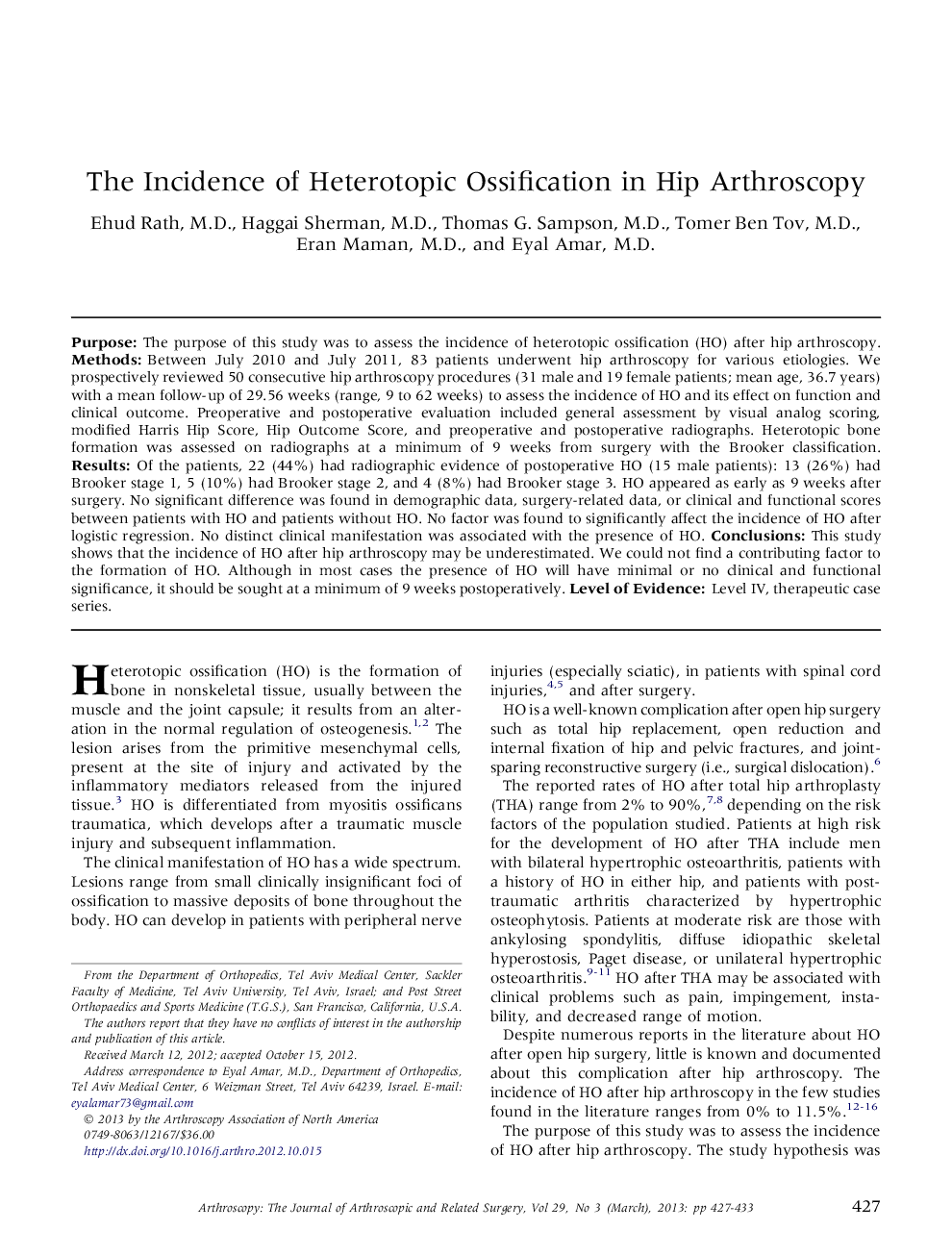| Article ID | Journal | Published Year | Pages | File Type |
|---|---|---|---|---|
| 4044068 | Arthroscopy: The Journal of Arthroscopic & Related Surgery | 2013 | 7 Pages |
PurposeThe purpose of this study was to assess the incidence of heterotopic ossification (HO) after hip arthroscopy.MethodsBetween July 2010 and July 2011, 83 patients underwent hip arthroscopy for various etiologies. We prospectively reviewed 50 consecutive hip arthroscopy procedures (31 male and 19 female patients; mean age, 36.7 years) with a mean follow-up of 29.56 weeks (range, 9 to 62 weeks) to assess the incidence of HO and its effect on function and clinical outcome. Preoperative and postoperative evaluation included general assessment by visual analog scoring, modified Harris Hip Score, Hip Outcome Score, and preoperative and postoperative radiographs. Heterotopic bone formation was assessed on radiographs at a minimum of 9 weeks from surgery with the Brooker classification.ResultsOf the patients, 22 (44%) had radiographic evidence of postoperative HO (15 male patients): 13 (26%) had Brooker stage 1, 5 (10%) had Brooker stage 2, and 4 (8%) had Brooker stage 3. HO appeared as early as 9 weeks after surgery. No significant difference was found in demographic data, surgery-related data, or clinical and functional scores between patients with HO and patients without HO. No factor was found to significantly affect the incidence of HO after logistic regression. No distinct clinical manifestation was associated with the presence of HO.ConclusionsThis study shows that the incidence of HO after hip arthroscopy may be underestimated. We could not find a contributing factor to the formation of HO. Although in most cases the presence of HO will have minimal or no clinical and functional significance, it should be sought at a minimum of 9 weeks postoperatively.Level of EvidenceLevel IV, therapeutic case series.
